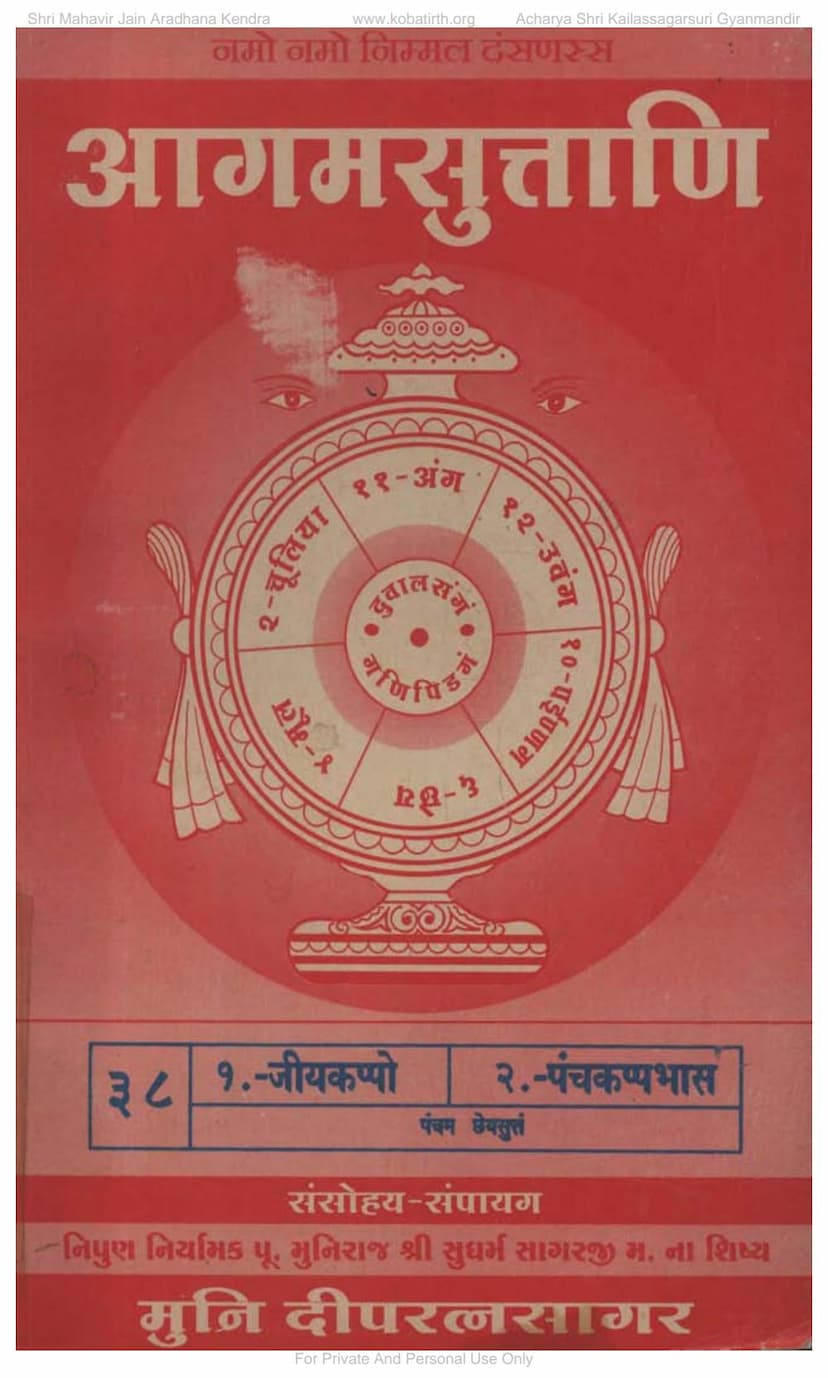Agam 38B Panchkappabhasa Chheysutt 05B
Added to library: September 1, 2025

Summary
This Jain text, "Agam 38B Panchkappabhasa Chheysutt 05B," is part of a larger collection of Jain Agamas, specifically identified as the fifth Chastrasutra within the Chheysutras. The title translates to "Panchkappabhasa" (meaning related to five kappas or rules/practices) and "Chheysutt 05B" (indicating it's the fifth Chastrasutra). The book is authored by Dipratnasagar and Deepratnasagar and published by Agam Shrut Prakashan.
The text is primarily an index or catalog of Jain Agamas, listing them with their corresponding numbers and titles. It indicates that the Jain Agamas are divided into 12 Angas, 12 Upangas, and various other sections like Painniyas, Chheysutras, Mul-sutras, and Chuliyas.
The provided pages (1-164) are largely introductory, filled with acknowledgments of financial donors and patrons for the publication of the Jain Agamas. These acknowledgments highlight the extensive support from individuals and Jain sanghs across various locations, including Vadodara, Mumbai, Madras, and more, indicating a significant community effort in preserving and disseminating these sacred texts.
The text also lists numerous other Jain religious and philosophical works published by Agam Shrut Prakashan, covering a wide range of topics such as rituals, philosophy, biographies, astronomical texts, and directories.
The core of the text from page 10 onwards (starting with "Panchkappo" and "Gaaha") appears to be the actual content of the specified Agama. It consists of verses or sutras presented in Gujarati script with numerical indexing, detailing what seems to be a comprehensive explanation or commentary related to the "five kappas" or principles. The content delves into various aspects of Jain practices, conduct, definitions, and philosophical concepts, presented in a highly detailed and structured manner, with extensive cross-referencing indicated by verse numbers.
Key themes and concepts that emerge from the indexed content include:
- Kappas (Rules/Practices): The text extensively discusses various "kappas" or rules, likely pertaining to monastic discipline, daily conduct, purity, and ethical guidelines within Jainism.
- Classification and Categorization: There's a strong emphasis on classifying different types of rules, actions, and situations, often categorized into various numbers (e.g., "diviho" - two types, "tivih" - three types, "chaturvidha" - four types, etc.).
- Renunciation and Asceticism: Many verses touch upon the path of renunciation, ascetic practices, and the virtues associated with them.
- Karma and Liberation: The underlying principles of karma, its effects, and the path to liberation (moksha) are implicitly or explicitly discussed through the context of Jain ethics and practices.
- Detailed Explanations: The text provides intricate details and explanations for various concepts, seemingly aiming for a thorough understanding of the subject matter.
- Guru-Shishya Tradition: The role of gurus and their teachings, as well as the importance of sincere discipleship, appears to be a significant element.
While a full, in-depth thematic analysis would require a deeper understanding of the Prakrit and Sanskrit terms within the Gujarati script, the overall impression is that this work is a foundational text within Jainism, elaborating on the practical and disciplinary aspects of the faith, likely intended for monks and serious practitioners. The sheer volume of detail suggests a sophisticated level of philosophical and practical exploration within the Jain tradition.
The inclusion of donor lists and other published works frames this specific Agama within the broader context of Jain scriptural preservation and dissemination efforts.